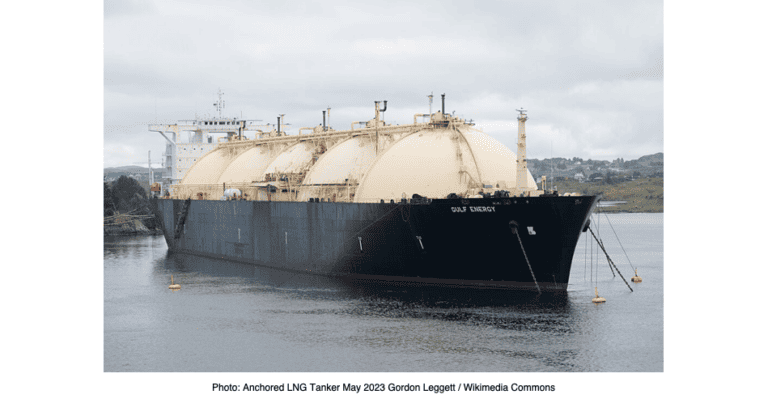
Why is nuclear energy an important influence on both natural gas and hydrogen futures?
The Feb 6, 2024 Energy Gang podcast was titled “A pause in US gas export approvals: a big win for the climate?US hits the brakes on gas exports!” It was described as a gassy episode with a focus on international natural gas trading, the impact of the Biden Administration’s pause on issuing new permits that…
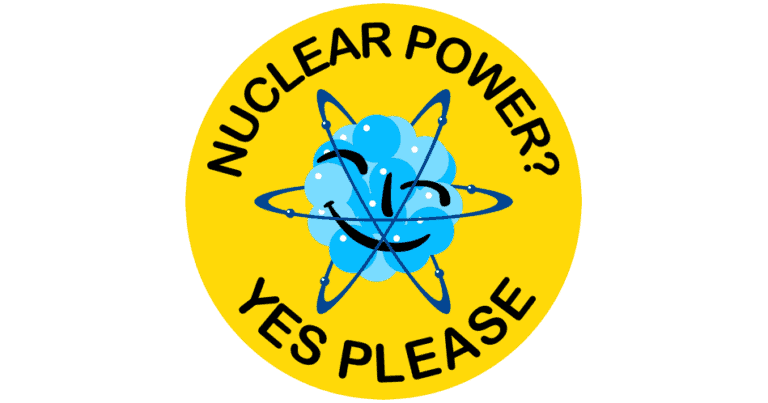
Pro-nuclear advocates should stop bashing advanced nuclear
I wish I knew why some nuclear advocates feel that it’s worth their time to spread as much negative information as they can find about the potential utility and value of advanced nuclear…

Why would climate publications disrespect nuclear fission?
Here is another instance of climate reporting that treats nuclear fission as if it barely exists. Before COP28, Cipher published an “Exclusive” that led off with “The United States is working behind the…
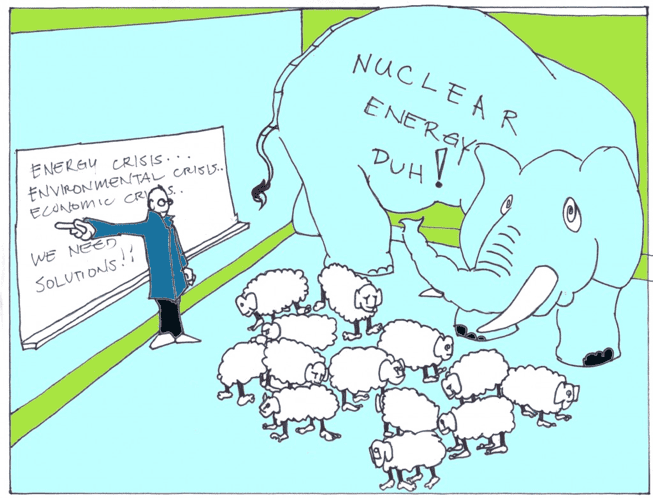
Why did The Energy Gang overlook the newsworthy impact of nuclear energy on COP28?
The Energy Gang’s Dec 15 episode discussed the major outcomes from COP28. Ed Crooks (@Ed_Crooks), Dr. Melissa Lott @mclott, and Amy Harder (@AmyAHarder) completed the show without mentioning nuclear energy. That episode of…

Atomic Show #314 – Economies of scale for micro, small, medium, large reactors – with James Krellenstein
James Krellenstein is a physicist, consultant and nuclear energy historian. He is currently employed as a senior advisor to Global Health Strategies. He started up their decarbonization practice with an emphasis on nuclear…

Atomic Show #314 – Economies of scale for micro, small, medium, large reactors – with James Krellenstein
James Krellenstein is a physicist, consultant and nuclear energy historian. He is currently employed as a senior advisor to Global Health Strategies. He started up their decarbonization practice with an emphasis on nuclear…

Atomic Show #313 – Stefano Buono, Founder and CEO of Newcleo
Stefano Buono is a physicist and the successful founder of Advanced Accelerator Applications, a multibillion dollar company that pioneered the use of several therapeutic medical isotopes. After making several people very rich, including…

Atomic Show #312 – Tyler Bernstein, CEO Zeno Power
Zeno Power makes cost-effective radioisotope power systems (RPS) for some of the most challenging environments in the solar system. Its systems use a proprietary package that allows a wider variety of isotopes to…
Why are smaller reactors attracting so much interest?
Small modular reactors (SMRs) are gaining increased attention as a major opportunity in clean power production. They are a welcome tool in the necessary transition from an energy system dominated by hydrocarbon combustion…
The Atomic Show #101 – Small nuclear power plants with Dan Yurman, Charles Barton, Kirk Sorensen
Small nuclear power plants. Round table with Kirk Sorensen, Dan Yurman, Charles Barton, Rod Adams Show 101 is a bit longer than normal, but I think you will want to listen carefully to…
Pronuclear videos continuing to proliferate – The Nuclear Option
With a hat tip to Ben Heard at Decarbonize SA, I thought it might inspire you to see two videos side by side. These videos were created in geographic locations that are about…
AP1000 granted NRC Design Certification
The Westinghouse AP1000 reactor plant design has been awarded a Design Certification by the US NRC. The decision was published in the Federal Register on 30 December 2005 and will become final 30…
Who said modular construction would save money on first of a kind units?
On July 27, 2015, the Wall St. Journal published an article written by Rebecca Smith titled Prefab Nuclear Plants Prove Just as Expensive. That piece has been widely shared and discussed on social…
NRC wavering on AP1000 decision under pressure by FOE
On May 10, 2011, the Friends of the Earth, a group that has professionally opposed nuclear energy since the late 1960s, issued a press release that challenged the US Nuclear Regulatory Commission’s refusal…
Smoking Gun Part 15 – Roger Sowell, "Refinery Defense Attorney" Argues That Used Nuclear Fuel is an "Embarrassing" Legacy
If you have followed any of my recent Twitter posts, (atomicrod) you will note that I have been involved for a day or so in an ongoing discussion with an anti-nuclear California lawyer…
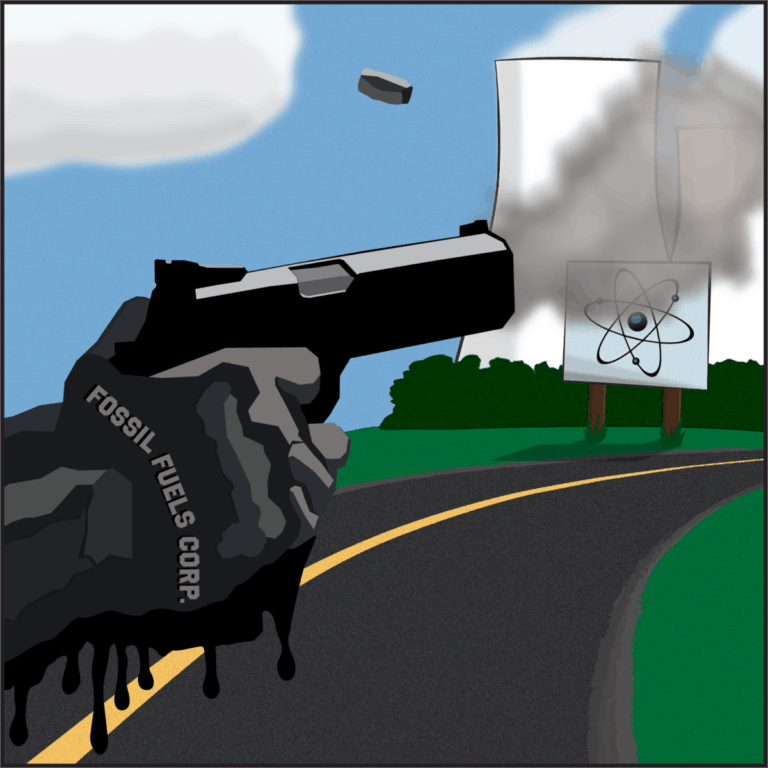
How did an oil shale investor hamstring his atomic energy competition? (Ancient but impactful smoking gun)
During the contentious effort that resulted in passage of the Atomic Energy Act of 1946, Sen Eugene D. Milliken (R-CO) played an important role in establishing an attempted US government monopoly over all…
Jerry Taylor of Cato Institute – Fires Back at My "Smoking Gun" Accusation That He is Opposed To Nuclear Energy BECAUSE He Prefers Natural Gas
Jerry Taylor, a senior fellow at the Cato Institute, has taken the time to produce a detailed and well-referenced rebuttal to my post titled Jerry Taylor, a Fellow at the Cato Institute, founded…
Investing in Nuclear
Nuclear investments – enabling the transition to a low-carbon economy
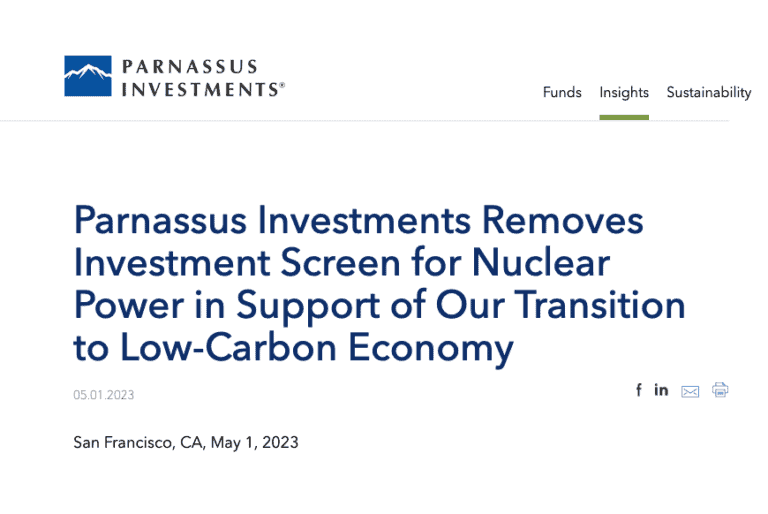
Parnassus Versus Green Century: A Contrast in Styles
Cross-posted from Nucleation Capital June, July and August of 2023 were the three hottest months the Earth has ever seen by such a large margin, it left climate scientists agog. Climate disasters are abounding apace, with the U.S. hit by 23 large-scale disasters, a record-breaking year already. In Pakistan, extreme rainfall and flooding affected 33…

How Hot is Cold Fusion?
The 24th International Conference on Cold Fusion (ICCF24) was held at the lovely and spacious Computer History Museum in Mountain View, CA over four days in late July. As a venture investor looking at evaluating and investing in a wide range of advanced nuclear ventures, I was invited to participate and/or sponsor the event. While…

Rod Adams
Managing Partner, Nucleation Capital, a venture fund enabling broader investor access to a diverse portfolio of advanced nuclear energy and deep decarbonization ventures. Nuclear energy expert and former submarine Engineer Officer with nuclear propulsion plant experience. Founder, Adams Atomic Engines, Inc. Host and producer, The Atomic Show Podcast.
